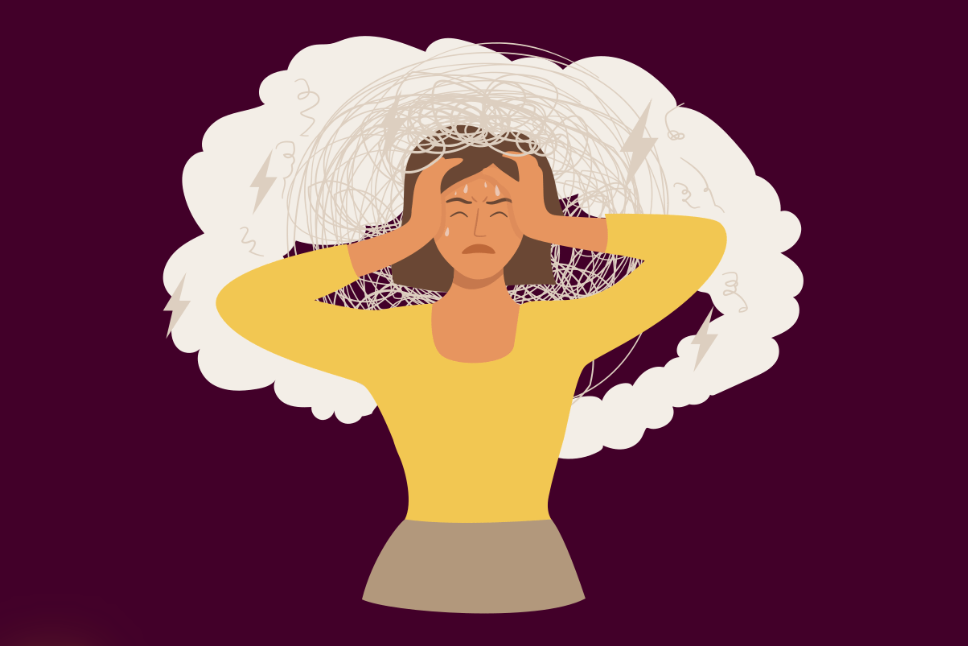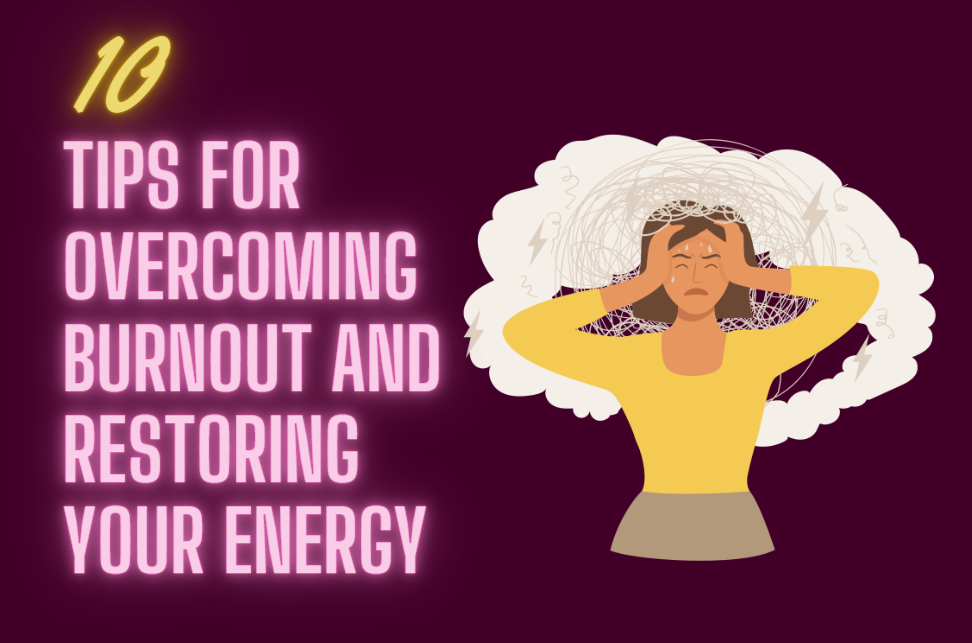Introduction
You’re exhausted, aren’t you? Burnout’s crept up on you, and now you’re searching for a lifeline. Look no further.
We’ve got 10 actionable tips to help you recharge and reclaim your zest for life. From setting boundaries to embracing mindfulness, these strategies are your roadmap to recovery.
So, shake off that fatigue and let’s dive in—your journey to revitalization starts now. It’s time to bounce back stronger than ever.
Recognize the Signs
Before you can tackle burnout, it’s crucial to identify its early signs within your daily routine and work life. You might notice you’re constantly exhausted, no matter how much sleep you get. Your motivation’s hit rock bottom, and tasks that once excited you now feel like insurmountable challenges.
If you’re feeling cynical or detached from your job and colleagues, this too can be a red flag. Additionally, your performance may suffer; you’re struggling to concentrate and your work quality’s slipping.
Don’t overlook physical symptoms either. Headaches, stomach issues, and muscle tension can all be signs of stress leading to burnout. Recognizing these symptoms early on is your first step towards reclaiming your energy and passion.
Set Clear Boundaries
Recognizing the early signs of burnout, you’ll need to set firm boundaries in both your personal and professional life to prevent further energy depletion. Start by identifying what drains your energy the most. Is it overtime work, an overflowing inbox, or social commitments? Once pinpointed, take action.
Say no to extra projects that stretch you too thin and limit time spent on tasks that aren’t essential.
At home, set aside uninterrupted time for yourself. Communicate with loved ones about your need for rest and space. Be clear about your availability to friends and family, and don’t feel guilty for prioritizing your well-being.
Prioritize Sleep Quality
Adequate sleep is crucial for combating burnout and replenishing your energy stores, so ensure you’re getting quality rest each night. Remember, it’s not just about the number of hours you’re in bed; it’s about the sleep’s restorative power.
Stick to a consistent sleep schedule, even on weekends, to regulate your body’s internal clock. Create a relaxing bedtime routine to signal your brain that it’s time to wind down. Keep your bedroom cool, dark, and quiet, using blackout curtains or white noise machines if necessary. Invest in a comfortable mattress and pillows that support a good night’s sleep.
And finally, avoid screens and caffeine before bedtime, as they can disrupt your ability to fall and stay asleep. Prioritizing sleep quality is a non-negotiable step in overcoming burnout.
Embrace Mindfulness Practices
As you grapple with burnout, turning to mindfulness practices can offer a much-needed respite for your mind. Incorporating daily meditation into your routine isn’t just calming; it’s shown to have lasting benefits on your mental well-being.
Let’s explore how mindful breathing techniques can serve as a powerful tool to bring your stress levels down and refocus your energy.
Daily Meditation Benefits
Regularly incorporating meditation into your daily routine can significantly reduce feelings of burnout and replenish your energy levels. When you meditate, you’re giving your mind a break from the constant chatter and demands of daily life. It’s like hitting the pause button on stress, allowing you to reset and approach tasks with renewed focus and clarity.
Embracing mindfulness practices, such as meditation, helps you become more aware of the present moment. This can lead to a deeper understanding of yourself and a greater sense of inner peace. Over time, you’ll find that you’re better equipped to handle stress, and you’ll develop a more resilient outlook on life.
Mindful Breathing Techniques
Incorporate mindful breathing into your routine to anchor yourself in the present and combat burnout effectively. This practice isn’t just fluff; it’s a proven technique to center your thoughts and calm your nervous system.
Start by finding a quiet spot where you can sit or lie down comfortably. Close your eyes and take a deep breath in through your nose, feeling your chest and belly rise. Hold it for a moment, then slowly exhale through your mouth, letting tensions melt away.
Consciously focus on the rhythm of your breath. If your mind wanders, gently bring it back to the sensation of air moving in and out. With regular practice, you’ll notice a shift in your stress levels and an increase in your overall sense of well-being.
Incorporate Regular Exercise
You’ll find that adding even just 30 minutes of moderate exercise to your daily routine can significantly alleviate symptoms of burnout. It’s not about pushing yourself to extremes; rather, it’s the consistency and the act of moving your body that counts.
Exercise releases endorphins, the body’s natural stress fighters, which improve your mood and energy levels.
Choose an activity you enjoy—whether it’s a brisk walk, cycling, or yoga. This isn’t just another task on your to-do list; it’s a chance to disconnect from work and reconnect with yourself.
Nourish With Healthy Foods
Fuel your recovery from burnout by choosing nutrient-dense foods that boost energy and brain function. When you’re feeling exhausted, it’s easy to reach for quick fixes like caffeine or sugar, but they’ll only lead to more crashes. Instead, focus on whole foods like lean proteins, whole grains, and plenty of fruits and vegetables. They provide a steady source of fuel for your body and brain.
Incorporate foods rich in omega-3 fatty acids, such as salmon or chia seeds, to support mental health. Don’t forget to hydrate; drinking enough water is crucial for maintaining energy levels. You’ll notice a difference when you prioritize balanced meals and snacks throughout the day—your body and mind will thank you for it.
Schedule Downtime
You’ve tackled your diet; now it’s time to look at how you rest.
Make sure you’re carving out moments in your day strictly for relaxation—this is non-negotiable.
Regularly disconnecting from work and technology can significantly recharge your batteries.
Prioritize Relaxation
Incorporating regular relaxation into your routine is a critical step in combatting burnout. You’ve got to treat downtime as non-negotiable, just like any other important appointment. Start by blocking out specific times in your calendar dedicated solely to unwinding.
It’s not just about having free time; it’s about consciously choosing activities that recharge your batteries. That could mean reading a book, practicing meditation, or simply taking a long walk.
Remember, it’s the quality of the downtime that matters, not just the quantity. You need to truly disconnect from work-related thoughts and stressors. Make it a ritual; the more you stick to it, the more you’ll benefit.
You’re not being lazy; you’re ensuring you remain productive and healthy in the long run.
Unplug Regularly
Disconnecting from digital devices is essential for recharging your mental batteries and reducing burnout. You’re bombarded with information, notifications, and digital chatter throughout the day. It’s no surprise you feel drained.
So, it’s time to schedule regular breaks from your screens. Make it a habit to turn off your phone, shut down your computer, and step away from all electronics for a set period each day. This isn’t just about avoiding work emails or social media; it’s about giving your brain the downtime it craves.
Use this time to engage in activities that soothe your mind and body. Whether it’s reading a book, taking a walk, or simply sitting quietly with your thoughts, this intentional pause can do wonders for your overall well-being.
Seek Social Support
Social support can be a lifeline when you’re grappling with burnout, providing both emotional sustenance and practical assistance. Don’t underestimate the power of reaching out to friends, family, or even a professional. They can offer an ear to listen, share tasks to lighten your load, or provide that much-needed distraction.
Remember, you’re not burdening them by asking for help. Most people are glad to support someone they care about. Plus, connecting with others can help you gain new perspectives on your situation.
If you’re unsure where to start, consider joining a support group where you can meet others who understand what you’re going through. You’re not alone, and admitting you need a helping hand is a brave and significant step toward recovery.
Reevaluate Your Goals
When feeling overwhelmed, it’s crucial to reassess what you’re aiming for.
Focus on what’s truly important by prioritizing your core objectives, ensuring they’re clear and achievable.
If necessary, shift your focus to different areas that align better with your current capacity and resources.
Prioritize Core Objectives
Amidst the chaos of burnout, it’s essential you reassess what truly matters by prioritizing your core objectives. Take a step back and ask yourself which goals are non-negotiable and which you can set aside for now.
It’s not just about cutting back; it’s about honing in on what’ll drive the most significant impact in your personal and professional life.
Focus on tasks that align with these critical goals and delegate or postpone the rest. Remember, you can’t do everything at once.
Set Realistic Targets
You’ll need to set a few achievable goals to regain a sense of accomplishment and progress. When you’re facing burnout, your usual targets can seem daunting, so it’s vital to break them down into smaller, more manageable tasks.
Start by reevaluating what’s truly important and prioritize accordingly. Ask yourself what you can realistically achieve given your current state, and don’t be afraid to scale back. It’s better to meet smaller objectives consistently than to struggle with unattainable standards.
Celebrate each victory, no matter how minor it may seem. Over time, these small wins will build momentum, helping you to slowly but surely reclaim your energy and enthusiasm for your work.
Shift Focus Areas
As you start achieving your smaller goals, it’s crucial to reassess and shift your focus to ensure they align with your long-term aspirations. Hitting these milestones can be rewarding, but don’t lose sight of the endgame. If you’ve set the bar too low, it’s time to aim higher. Conversely, if you’re struggling, consider whether your goals are still realistic.
Reevaluating your objectives isn’t a sign of failure; it’s a strategic move. It keeps you agile and responsive to change. Take stock of what’s working and what’s not. Perhaps you’ve discovered new interests or priorities have shifted. Update your goals to reflect these insights.
This recalibration can reinvigorate your motivation and help you avoid future burnout. Keep your eyes on the prize, but remember to adjust the path as needed.
Learn to Delegate Tasks
Many of your tasks can be delegated to others, freeing up your time and reducing stress. It’s not just about offloading your workload; it’s about empowering your team and trusting them to handle responsibilities.
Begin by identifying tasks that don’t require your specific expertise. It’s crucial to provide clear instructions and set expectations to ensure that the task is completed to your standards.
Remember, delegation is a skill that improves with practice. Start small and gradually increase the complexity of tasks you delegate. As you become more comfortable with the process, you’ll find your workload more manageable, and your energy levels restored.
Importantly, you’ll also be fostering a collaborative environment where everyone can contribute and grow.
Frequently Asked Questions
How Does Burnout Differ Between Individuals in Creative Professions Versus Those in More Traditional Office Settings?
You’ll find that burnout varies greatly between creative professionals and traditional office workers.
Creatives often grapple with emotional exhaustion due to the constant demand for innovation, while office workers might face the monotony of routine tasks draining their energy.
You’re dealing with unique stressors in each field, and recognizing these differences is crucial for managing your own burnout.
Don’t forget, individual experiences still vary widely, regardless of the profession.
Can Burnout Affect Physical Health, and if So, What Are Some of the Long-Term Consequences if Left Unaddressed?
Yes, burnout can indeed impact your physical health. If you don’t address it, you’re looking at chronic conditions like heart disease, weakened immune response, and gastrointestinal issues.
Long-term, you might suffer from severe exhaustion, insomnia, and even depression. It’s critical to recognize the signs early and take steps to manage your stress before these consequences become your everyday reality.
Don’t wait until you’re overwhelmed; take action to protect your health now.
How Do Cultural Attitudes Towards Work and Leisure Impact an Individual’s Susceptibility to Burnout?
Cultural attitudes towards work and leisure significantly affect your risk of burnout. If you’re immersed in a work-centric culture that stigmatizes downtime, you’re more likely to push yourself too hard and neglect rest.
Conversely, societies valuing balance and leisure can help you maintain healthier work habits. It’s crucial to recognize these cultural pressures and actively pursue a personal equilibrium to safeguard your wellbeing and reduce burnout risk.
Are There Any Specific Strategies for Parents Balancing Work and Childcare to Prevent or Manage Burnout?
Absolutely, as a parent juggling work and childcare, you’ve got strategies to fend off burnout. Start by setting boundaries between work and family time.
You’ll also benefit from establishing a support network—think family, friends, or a babysitter.
Don’t forget to carve out ‘me’ time, even if it’s just a few minutes.
Prioritize tasks, too, so you’re not swamped.
And remember, saying no is okay; you can’t do everything, and that’s perfectly fine.
What Role Does Technology, Such as Smartphones and Constant Connectivity, Play in Contributing to Burnout, and How Can We Mitigate This Effect?
Smartphones and constant connectivity can lead to burnout by keeping you on alert. You’re bombarded with notifications and feel pressured to respond immediately. To mitigate this, set boundaries.
Turn off notifications for certain hours, or delete stress-inducing apps. Make tech work for you, not against you.
Designate times to unplug and recharge, ensuring you create a healthy balance and prevent tech from draining your energy.
Conclusion
You’ve got the tools to beat burnout now. Remember, it’s all about recognizing your limits, setting boundaries, and taking care of yourself.
Prioritize those Zzz’s, stay present with mindfulness, and keep moving.
Carve out time just for you, lean on your friends, and realign your ambitions.
And don’t forget to share the load—delegating’s your friend.
With these strategies, you’ll recharge your batteries and find your spark again.
You’ve got this!





